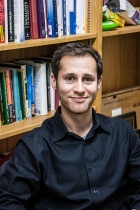From the Editors: Commentary for Mobility Special Issue
Schug and Lu (this issue) present an overview of research on the similarity-attraction link, noting cultural differences in this phenomenon (e.g., in America & Japan). They note that variables such as relational mobility and size of social network matter. They also note the dark side of having preferences for similarity in relationships, which can lead to segregation based on factors like race or education level. Another line of research has explored other situations in which people would not show a preference for similar others. One experiment showed that people may show a preference for dissimilar others when they believe that others will like them, and thus, the likelihood of mutual attraction is higher (Aron, Steele, Kashdan, & Perez, 2006). The self-expansion model predicts that when people feel like their lives are “stuck in a rut” and thus, have a higher need for new activities, they show a preference to interact with people who come from different backgrounds than they do (Wright, McLaughlin-Volpe, & Brody, 2004). So perhaps a way to counteract the negative effects of similarity preferences would be to encourage people’s curiosity and openness to new experiences.
Su, Kao, and Tsai (this issue) discuss residential mobility and how it interplays with moving to new communities, and how individual differences (personality traits like introversion) can affect how people adjust to those new communities and how they feel attached to those communities. They conclude with a discussion of socio-ecological theory, which contains the idea that communities affect individuals’ outlook, especially over successive generations. I was reminded of some new research presented at a recent conference (see here: http://www.scienceofrelationships.com/home/2015/3/5/its-not-just-about-you-and-me-how-social-networks-impact-rel.html) showing that, among other things, support from one’s social network and broader community attitudes can affect relationship quality. Perhaps a natural extension of this work would be to examine how interpersonal relationships change across generations as a function of socio-ecological variables.
It would also be interesting to examine different types of mobility as a function of urban subcultures (for example, comparing cities like New York, Washington, D.C., Los Angeles, and San Francisco). Perhaps in some cities people feel greater connectivity with the community (through local sports teams, etc.), which can be a buffer against some of the negative effects of changing social environments.
Finally, Thomson and Yuki (this issue) also discuss socio-ecological theory as it pertains to friendship network formation, with the idea that behaviors that will be socially successful in one culture probably won’t apply to social success in other cultures. For example, the authors discuss how some mindsets (like having high self regard, or having high initial trust in others, or disclosing personal information) might be wonderfully good strategies in high relational mobility societies, but might backfire a lot in low relational mobility societies. It may be comforting for readers to know that humans are very resilient creatures, with a strong capacity to adapt to new social environments. Future research could examine the specific ways in which people become socialized (either through observation or direct instruction) the more socially appropriate ways to gain acceptance and form interpersonal relationships in new societies that are different from native societies.
Aron, A., Steele, J. L., Kashdan, T., & Perez, M. (2006). When similars do not attract: Tests of a prediction from the self-expansion model. Personal Relationships, 13, 387–396.
Wright, S. C., McLaughlin-Volpe, T., & Brody, S. M. (2004, January). Seeking and finding an expanded “me” outside my ingroup: Outgroup friends and self change. Paper presented at the annual convention of Society for Personalityand Social Psychology, Austin, TX.

